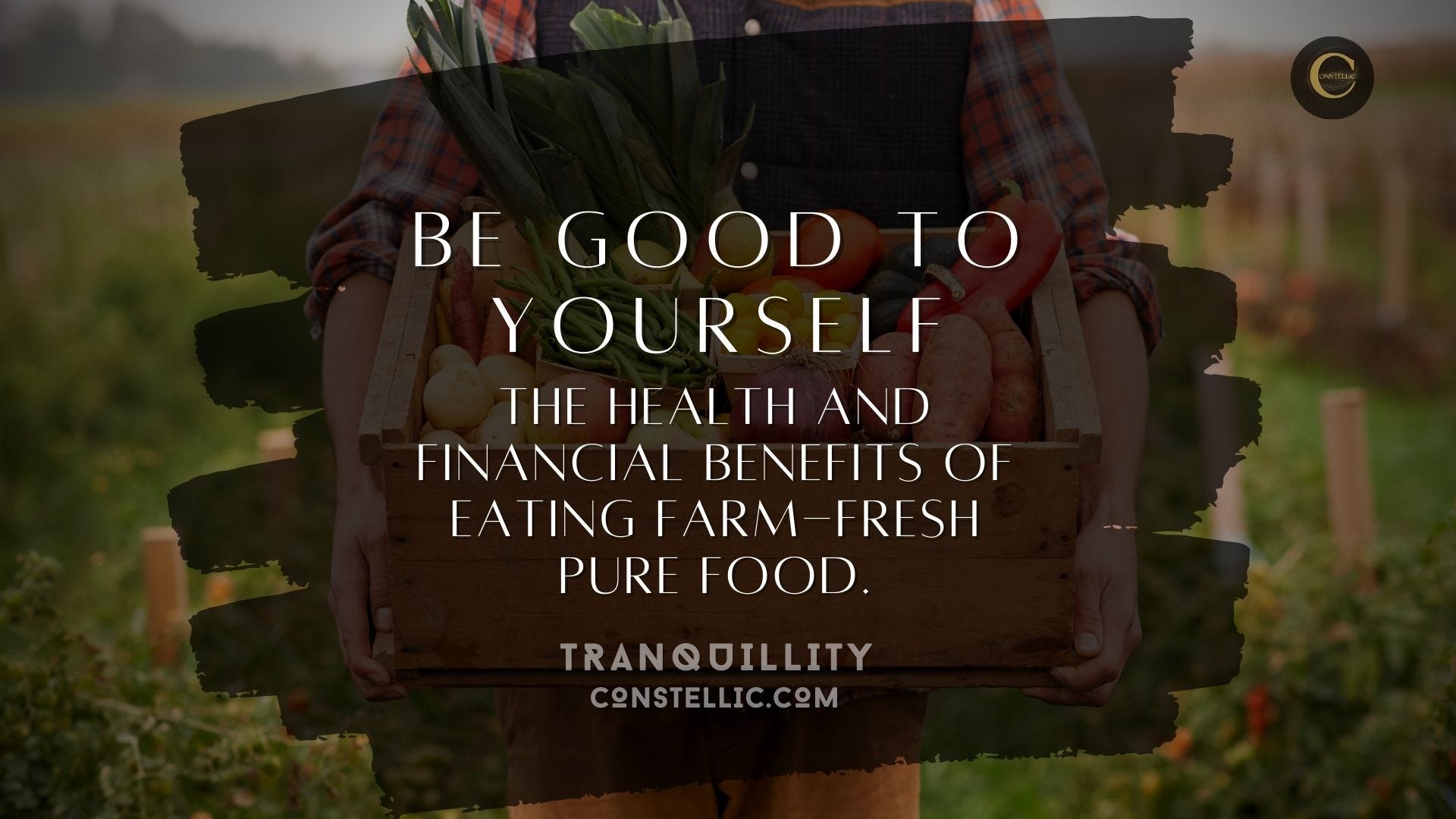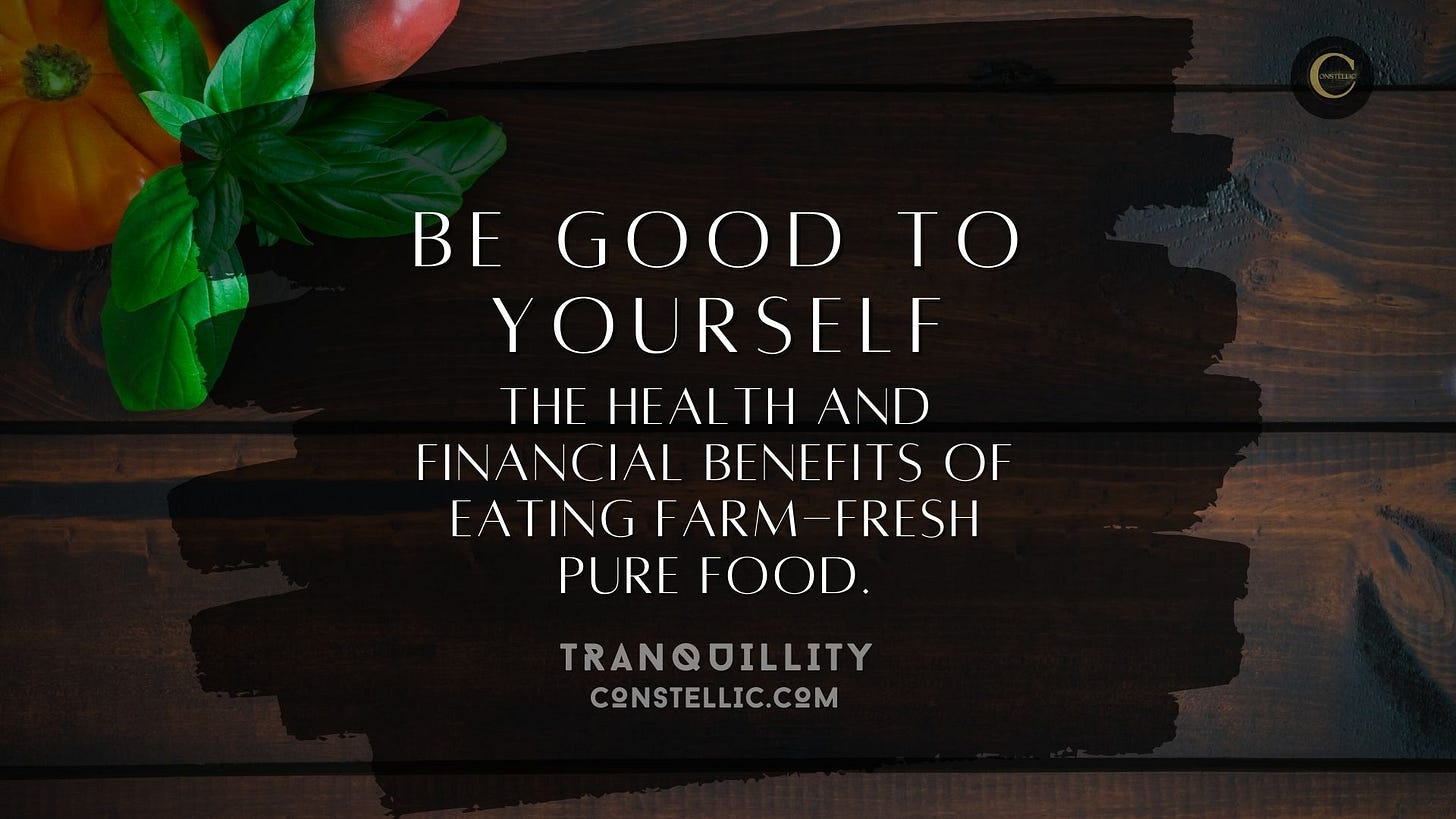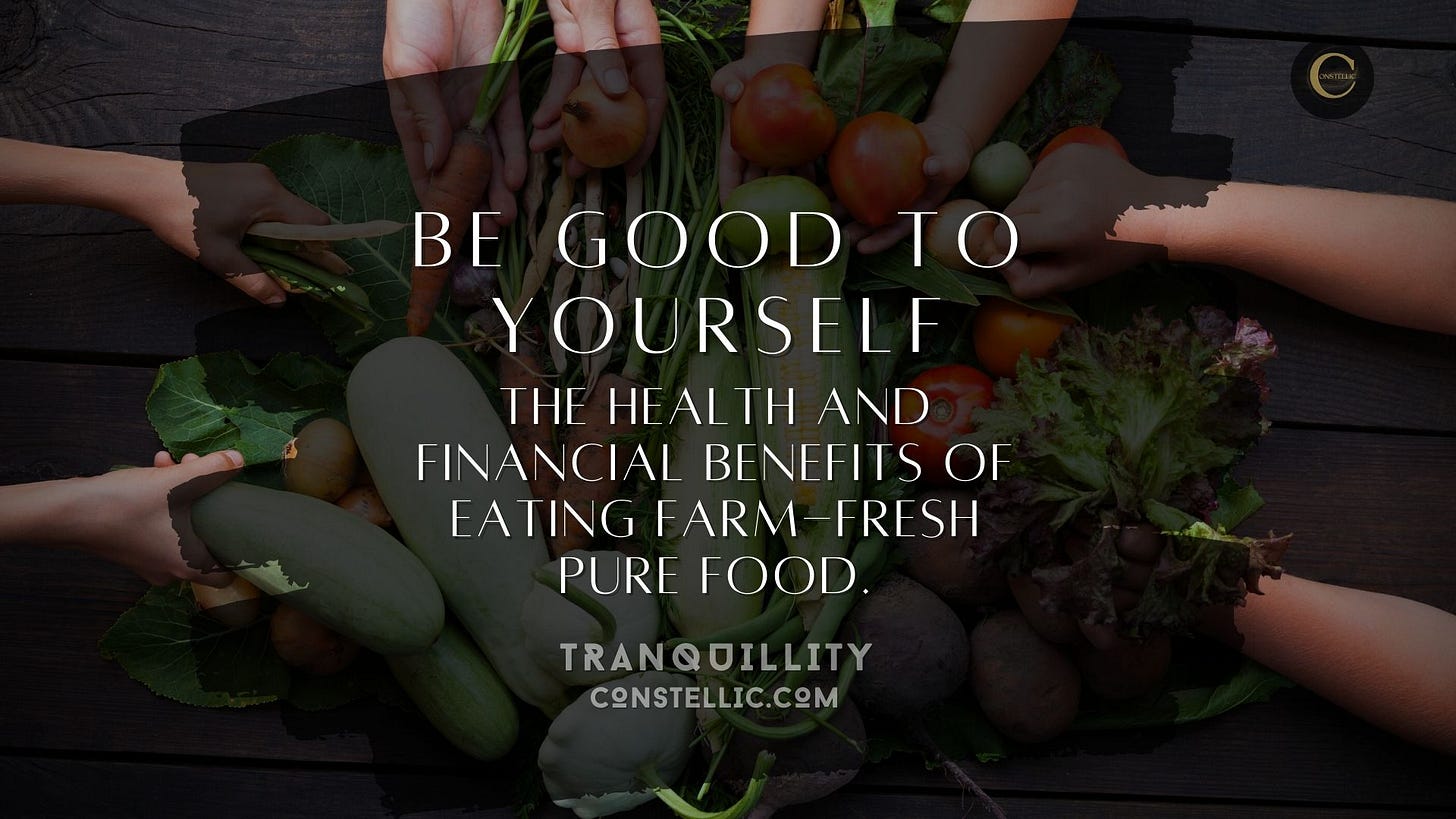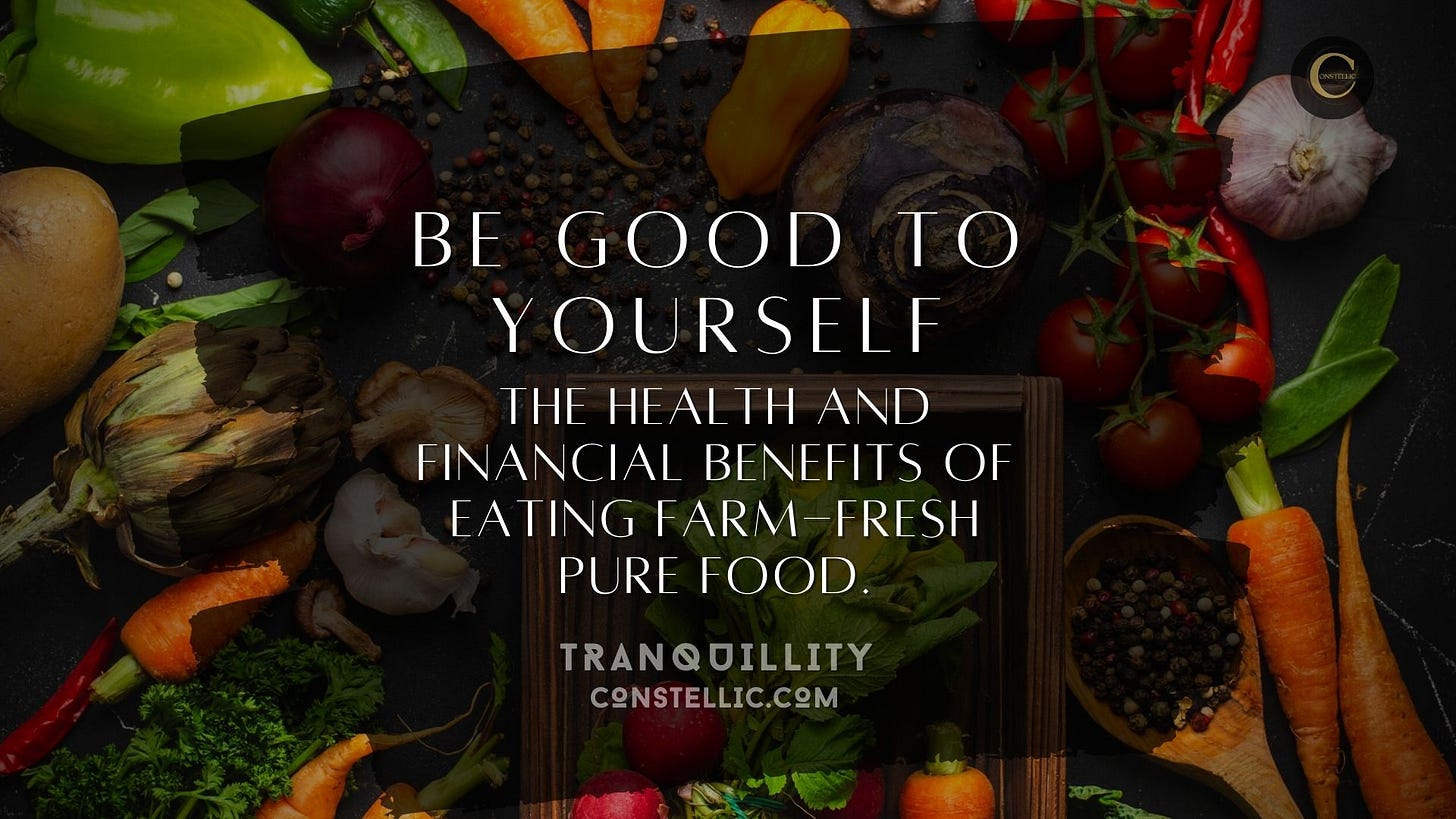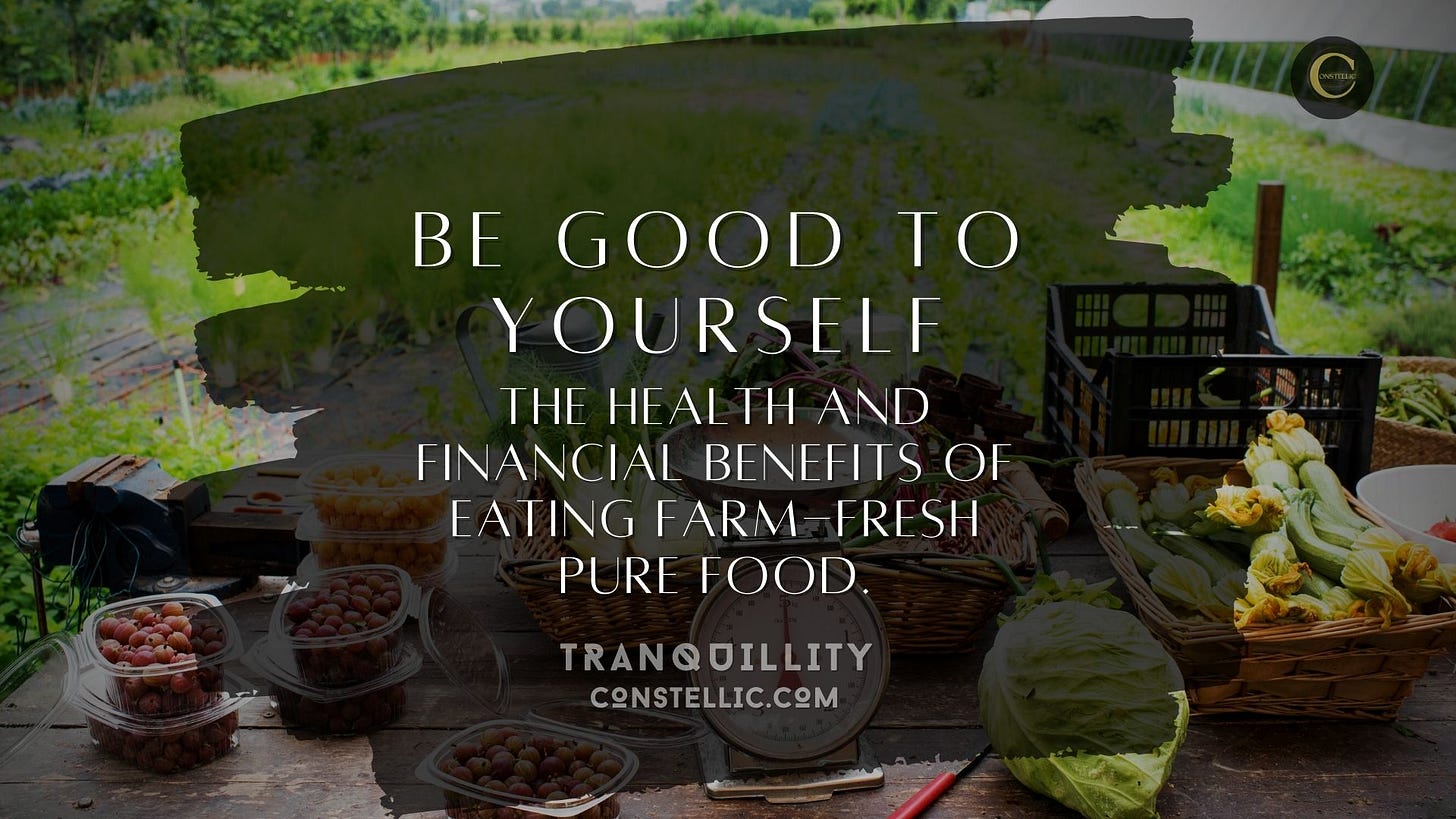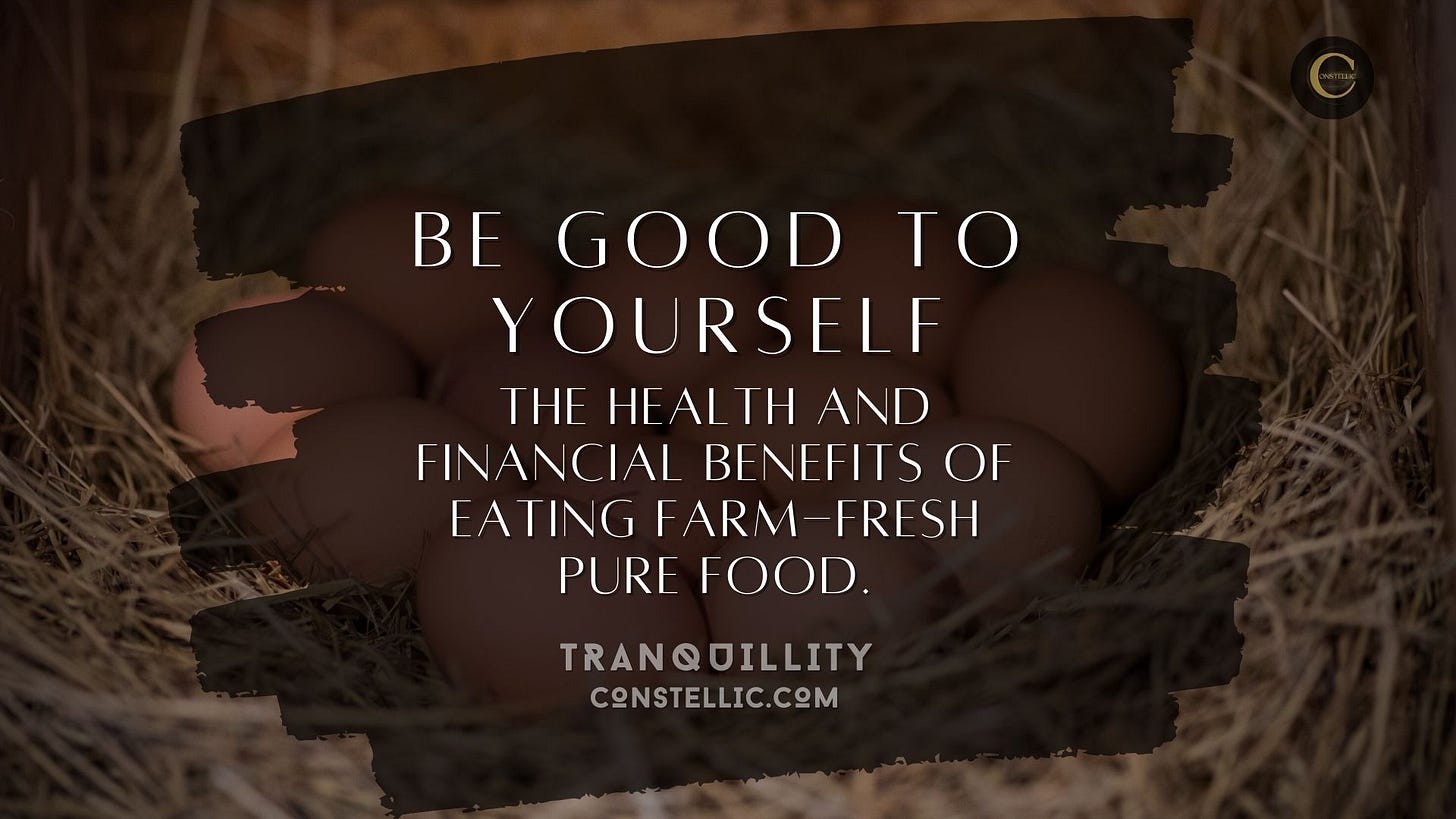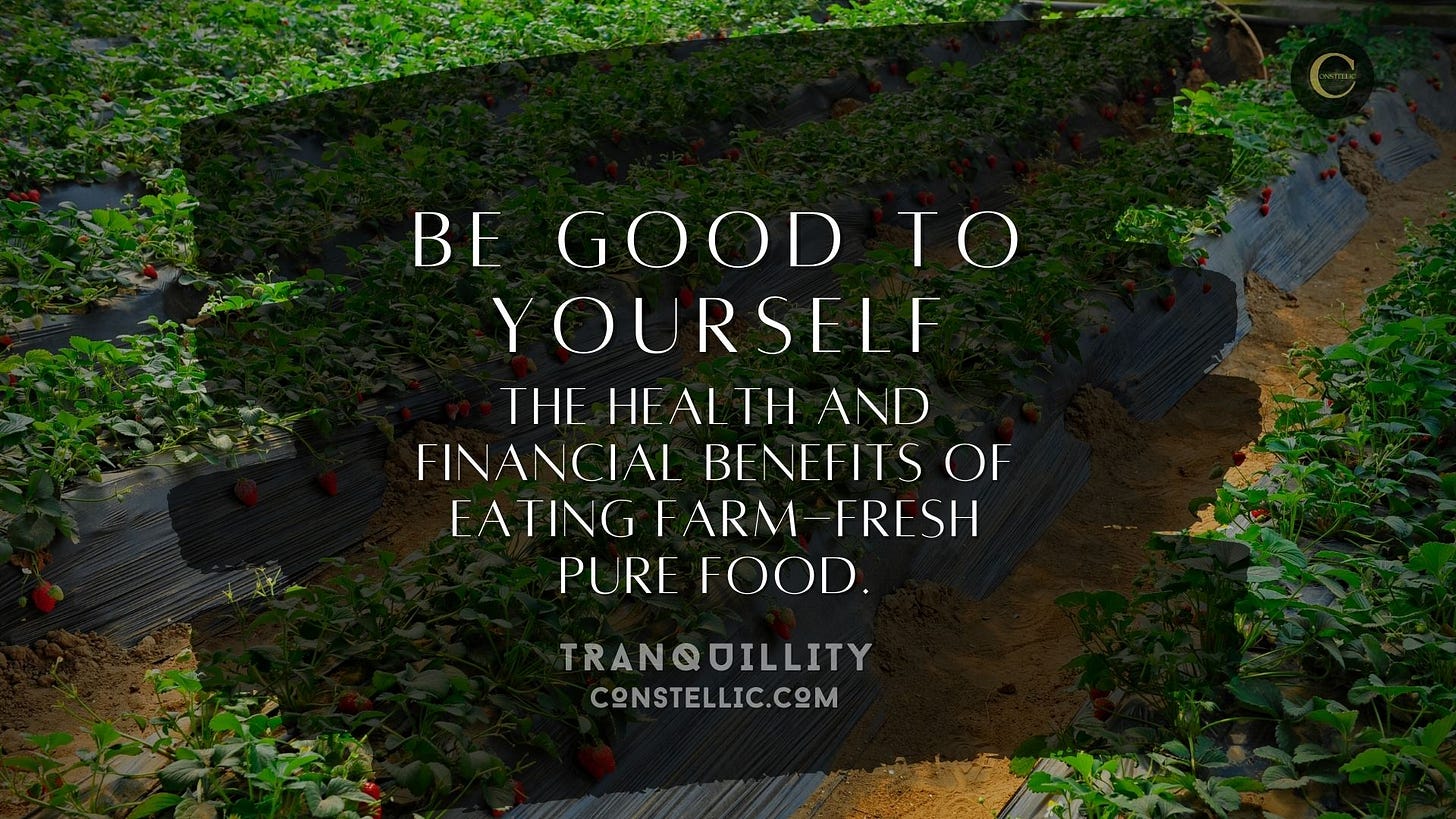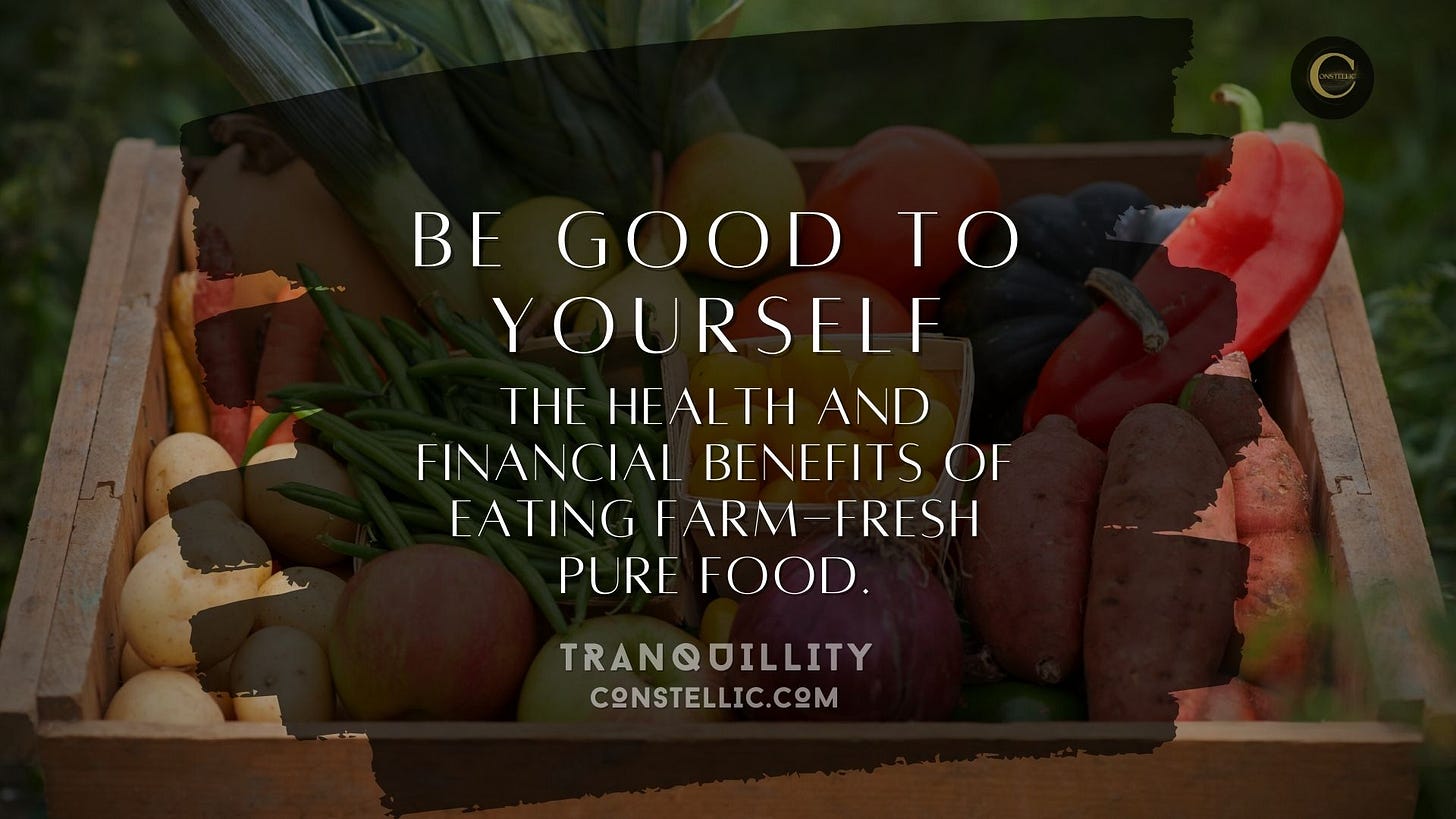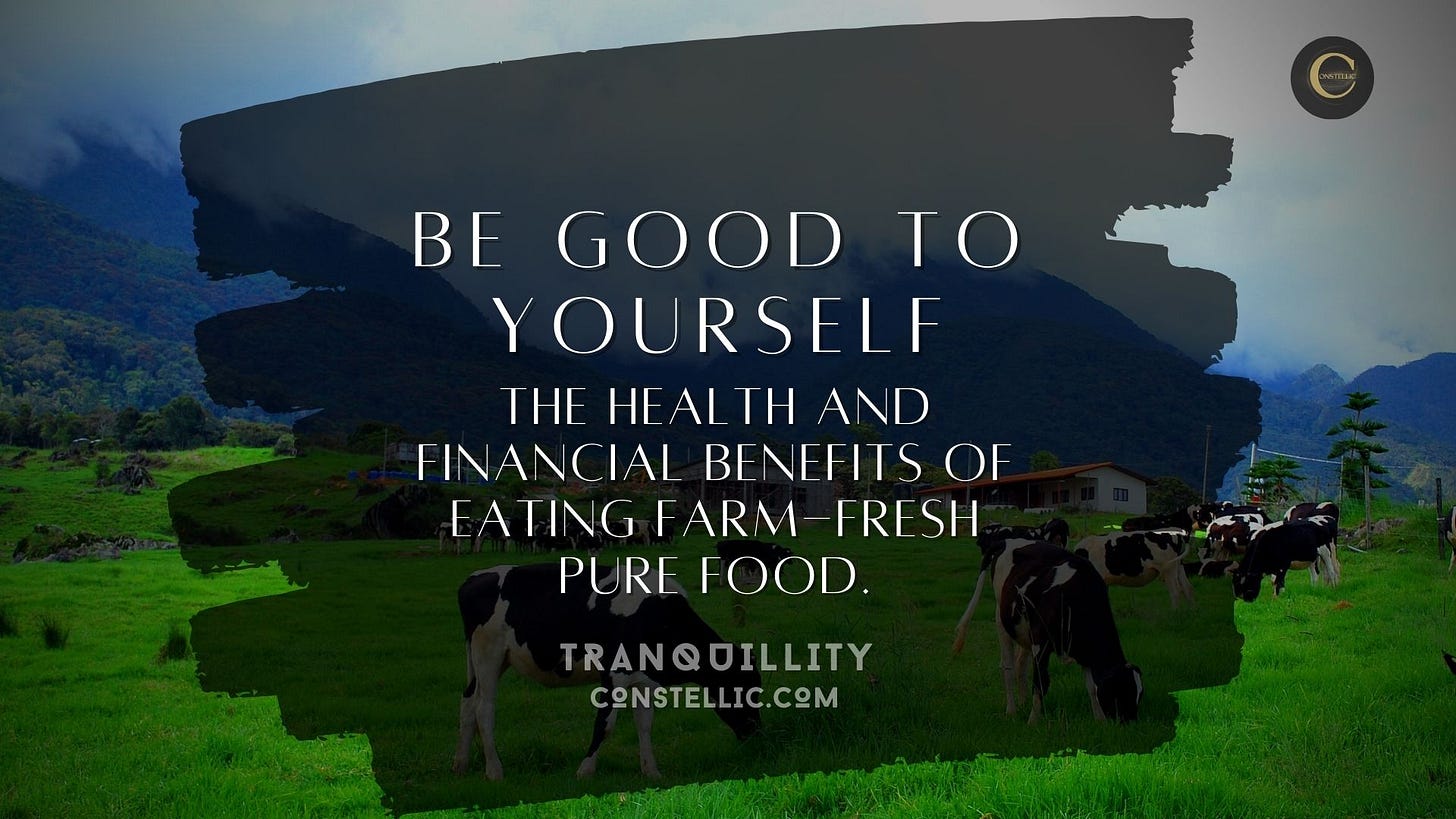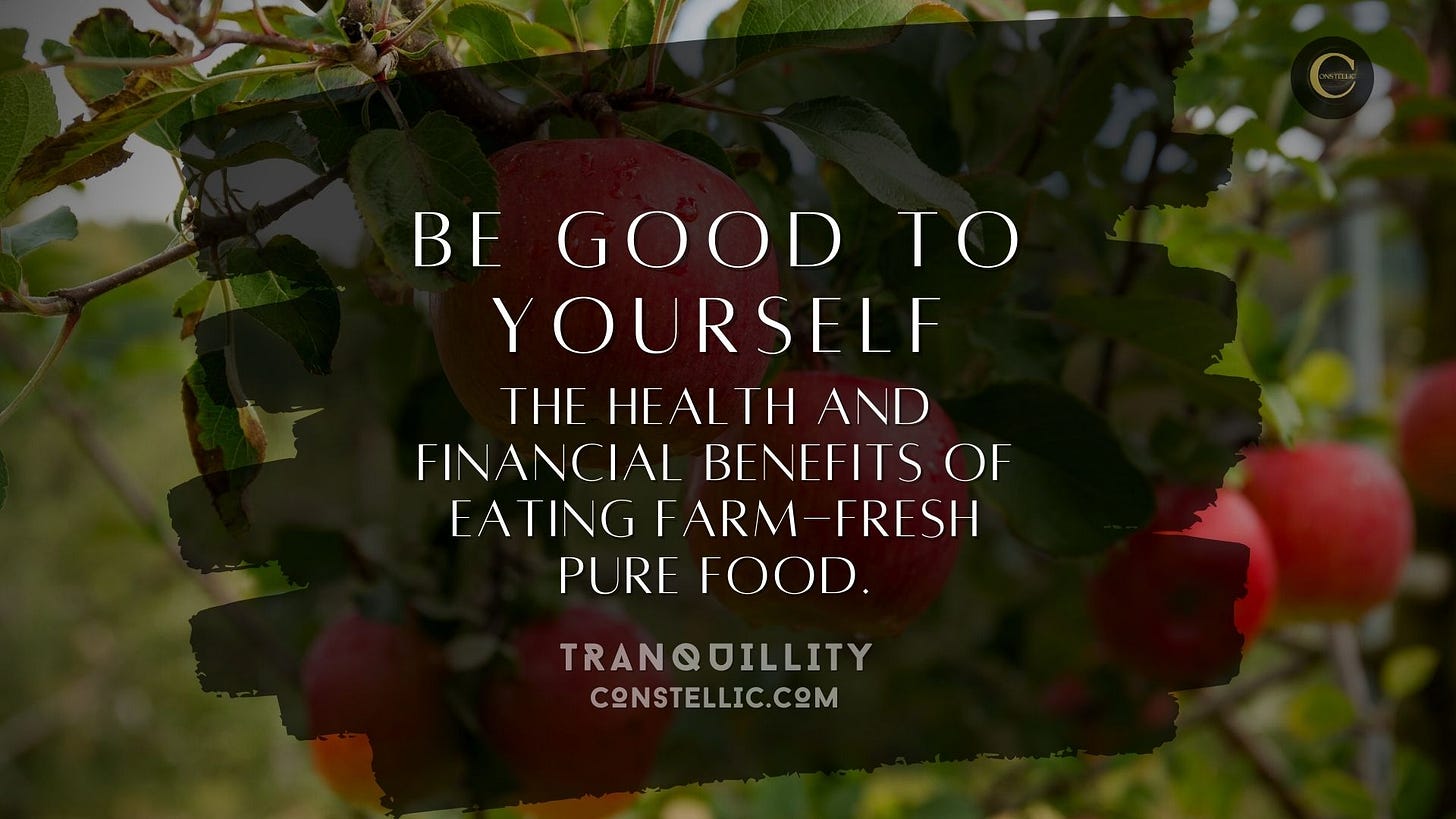In recent years, there has been a growing interest in farm-fresh pure food as people become more conscious about their health and well-being. This trend is not without reason, as consuming fresh food directly from farms brings numerous benefits to both our physical health and financial well-being.
In this article, I will share the advantages of eating farm-fresh pure food, supported by examples that highlight its positive impact.
Superior Nutritional Value:
Farm-fresh pure food is known to be significantly higher in nutritional value compared to processed and packaged alternatives. The moment fruits, vegetables, and grains are harvested, they begin to lose important vitamins, minerals, and antioxidants. The longer the time between harvest and consumption, the more these vital nutrients deteriorate. By choosing farm-fresh produce, we can maximize our intake of essential nutrients, leading to improved health and disease prevention.
Example: A study conducted by the University of California, Davis, revealed that freshly picked spinach contains nearly double the amount of vitamin C and three times the amount of vitamin A compared to store-bought spinach, which had been stored for a week.
Reduced Exposure to Harmful Chemicals:
Mass-produced food often involves the use of pesticides, herbicides, and fertilizers to ensure higher yields. Unfortunately, these chemicals can leave residues on the produce, which can have adverse effects on our health when consumed regularly. By opting for farm-fresh pure food, we reduce our exposure to these harmful chemicals, thereby safeguarding our well-being.
Example: The Environmental Working Group (EWG) releases an annual report called the "Dirty Dozen" that identifies the most pesticide-contaminated fruits and vegetables. In the 2021 report, strawberries, spinach, and kale were found to have the highest pesticide residues among conventionally grown produce. Choosing farm-fresh alternatives for these items can significantly reduce exposure to these chemicals.
Enhanced Taste and Flavor:
Farm-fresh pure food offers an unparalleled taste and flavor experience. Unlike commercially produced food that often prioritizes durability and uniformity, farm-fresh produce is allowed to ripen naturally, ensuring optimal flavor development. The result is food that bursts with freshness, juiciness, and rich aromas, elevating the overall culinary experience.
Example: Bite into a sun-ripened tomato plucked fresh from the vine, and you'll be greeted with an explosion of vibrant, sweet, and tangy flavors. This natural taste profile is often absent in supermarket tomatoes, which are typically picked prematurely to withstand transportation and extend shelf life.
Cost Savings:
Contrary to popular belief, farm-fresh pure food can be more cost-effective in the long run. While the initial price tag might seem higher compared to conventionally produced food, taking into account the quality, nutritional density, and reduced need for dietary supplements, it becomes clear that investing in farm-fresh produce can lead to long-term savings on healthcare and well-being.
Example: Purchasing organic, farm-fresh eggs might cost slightly more than their commercially produced counterparts. However, these eggs are known to have higher levels of omega-3 fatty acids, vitamin E, and beta-carotene, which can reduce the risk of heart disease and improve overall health. By consuming nutrient-dense eggs, individuals may be able to save on healthcare costs in the future.
Common Sense Deduction
Choosing farm-fresh pure food not only contributes to our physical health but also brings financial benefits in the long run. With superior nutritional value, reduced exposure to harmful chemicals, enhanced taste and flavor, and potential cost savings, farm-fresh produce serves as a gateway to a healthier and more sustainable lifestyle. By supporting local farmers and making conscious decisions about the food we consume, we can nourish our bodies while simultaneously contributing to the well-being of our communities and the environment.
Advantages of Planting and Harvesting Your Own Food
Planting and harvesting your own food is a rewarding and fulfilling endeavor that comes with numerous advantages. Whether you have a small garden or a larger plot of land, growing your own food provides a range of benefits for both your physical and mental well-being. Let's explore some of the advantages of planting and harvesting your own food:
Access to Fresh and Nutritious Food:
One of the most significant advantages of growing your own food is the access to fresh, high-quality produce. When you plant and harvest your own fruits, vegetables, and herbs, you can enjoy them at their peak ripeness and flavor. Freshly harvested produce retains its nutritional value, ensuring that you consume a higher concentration of vitamins, minerals, and antioxidants. This can contribute to better health and overall well-being.
Control over Pesticides and Chemicals:
Growing your own food allows you to have full control over the use of pesticides and chemicals. You have the option to adopt organic gardening practices, minimizing or eliminating the use of synthetic fertilizers, herbicides, and pesticides. This means you can reduce your exposure to potentially harmful chemicals and enjoy food that is free from residues. It also promotes a healthier environment by minimizing the release of pollutants into the soil and water sources.
Expense Savings:
Planting and harvesting your own food can lead to significant cost savings over time. While there may be initial investments in tools, seeds, and soil amendments, the long-term benefits outweigh the expenses. By growing your own food, you can reduce your grocery bills, especially during the peak growing season. Additionally, the cost of certain fresh herbs, exotic vegetables, and specialty crops can be quite high in stores, but you can grow them inexpensively at home.
Environmental Sustainability:
Growing your own food promotes environmental sustainability in several ways. Firstly, it reduces the need for long-distance transportation, which contributes to carbon emissions. By reducing your food miles, you help lower your carbon footprint. Secondly, you have control over the use of water and can employ water-saving techniques like drip irrigation or rainwater harvesting. Moreover, you can adopt organic practices that promote soil health, conserve biodiversity, and reduce pollution.
Mental and Emotional Well-being:
Gardening has been proven to have positive effects on mental and emotional well-being. Engaging in gardening activities such as planting, nurturing, and harvesting plants can be therapeutic and relaxing. Spending time outdoors, connecting with nature, and being physically active while tending to your garden can reduce stress levels, improve mood, and increase mindfulness. It provides a sense of accomplishment and satisfaction, boosting self-esteem and overall happiness.
Educational and Learning Opportunities:
Planting and harvesting your own food offers valuable educational opportunities, especially for children. It allows for hands-on learning about the life cycle of plants, the importance of soil health, the role of pollinators, and the benefits of sustainable practices. It also encourages healthy eating habits and fosters a deeper appreciation for where food comes from. Gardening provides an avenue for continuous learning and skill development, as you experiment with different crops, techniques, and growing methods.
Determination:
Planting and harvesting your own food is a gratifying experience that brings numerous advantages. From enjoying fresh and nutritious produce to having control over pesticides, experiencing cost savings, promoting environmental sustainability, enhancing mental well-being, and providing educational opportunities, growing your own food empowers individuals to lead healthier, more self-sufficient, and environmentally conscious lives. So, roll up your sleeves, grab your gardening tools, and embark on a journey of self-sufficiency and abundance by planting and harvesting your own food.
Departure From Land - Though Most Are Eventually Buried There
Societies have gradually moved away from farm-fresh, naturally grown food due to various factors, including industrialization, urbanization, and changes in food production and distribution systems. This shift has resulted in several negative effects on people's health. Let's delve into some of the reasons for this transition and the associated health consequences.
Industrialization and Intensive Farming Practices:
The rise of industrialization and the need to feed growing populations led to the development of intensive farming practices. These practices aim at maximizing crop yields and animal production through the use of synthetic fertilizers, pesticides, antibiotics, and growth hormones. While they increased productivity, they also compromised the nutritional quality of food and introduced potential health risks.
Negative Health Effects: Intensive farming practices have been associated with higher pesticide residues, antibiotic resistance, and reduced nutrient content in crops. Consuming food produced using these methods may expose individuals to harmful chemicals and decrease the intake of essential nutrients, leading to potential health issues.
Mass Production and Food Processing:
The demand for convenient, ready-to-eat food led to the rise of mass production and food processing industries. These industries prioritize efficiency, shelf life, and profitability, often at the expense of nutritional quality. Highly processed foods are typically loaded with refined sugars, unhealthy fats, artificial additives, and excessive sodium.
Negative Health Effects: Regular consumption of processed foods has been linked to an increased risk of obesity, cardiovascular disease, type 2 diabetes, and other chronic health conditions. These foods are often energy-dense but nutrient-poor, leading to overconsumption of calories without fulfilling the body's nutritional needs.
Globalization and Long-Distance Transportation:
Advancements in transportation and globalization have made it possible to import food from distant regions. While this has increased the variety and availability of certain foods year-round, it often comes at the cost of freshness and nutritional value. Food that travels long distances may be harvested before reaching full maturity, artificially ripened, or treated with preservatives to extend shelf life.
Negative Health Effects: Prolonged storage and transportation can lead to nutrient degradation, particularly in perishable fruits and vegetables. Vitamins, minerals, and antioxidants gradually diminish, resulting in lower nutritional content by the time the food reaches consumers. This can contribute to suboptimal nutrient intake and potential deficiencies.
Marketing and Food Industry Influence:
The influence of marketing and the food industry plays a significant role in shaping consumer preferences and choices. Aggressive advertising campaigns often promote processed and unhealthy foods, while downplaying the importance of fresh, whole foods. This can lead to a cultural shift where convenience and taste are prioritized over nutritional value.
Negative Health Effects: Excessive consumption of processed and unhealthy foods can contribute to obesity, nutrient deficiencies, and chronic diseases. The marketing tactics employed by the food industry can mislead consumers and contribute to an unhealthy food environment.
Disconnection from Food Production:
With the modernization of agriculture, urbanization, and the rise of supermarkets, people have become increasingly disconnected from the source of their food. Many individuals lack knowledge about farming practices, seasonal produce, and sustainable food choices. This disconnection reduces awareness of the benefits of farm-fresh, naturally-grown food.
Negative Health Effects: The disconnection from food production can lead to a lack of appreciation for fresh, whole foods and reliance on convenient but unhealthy alternatives. It may contribute to a diet characterized by processed foods, fast food, and excessive intake of added sugars and unhealthy fats.
Decision:
The shift away from farm-fresh, naturally-grown food has been driven by various societal and economic factors. Unfortunately, this transition has had negative effects on people's health. The prevalence of intensive farming practices, mass production, and processing, long-distance transportation, food industry influence, and disconnection from food production have contributed to reduced nutritional quality, increased consumption of processed and unhealthy foods, and the rise of chronic health conditions. Reversing these trends and promoting the consumption of farm-fresh, naturally-grown food is essential for improving public health and fostering a sustainable food system.
Back To Being Agrarian Societies
Moving back to an agrarian society, where individuals actively participate in planting and harvesting natural food, requires a collective effort and a shift in mindset. Though farming has been the norm for millennia, now some argue that it may not be feasible or practical for everyone to completely embrace an agrarian lifestyle. I disagree with it. We are not here on this earth to reinvent the wheel, we are here to responsibly and thankfully use the wheel and then go. There are steps individuals can take to reconnect with food production and experience the benefits of a closer association with nature. Here's how people can move towards an agrarian society and the benefits it can bring:
Home Gardening and Urban Agriculture:
Even in urban settings, individuals can engage in home gardening or participate in community gardens. Utilizing available space, such as balconies, rooftops, or small plots of land, allows for the cultivation of fruits, vegetables, and herbs. This not only provides fresh, nutritious food but also fosters a connection with nature and promotes sustainable practices.
Benefits:
Access to fresh, pesticide-free produce, enhancing nutritional intake.
Reduction in grocery bills and increased self-sufficiency.
Physical activity and stress reduction through gardening.
Increased environmental awareness and conservation of green spaces.
Community-Supported Agriculture (CSA):
Joining a Community-Supported Agriculture program involves individuals or families purchasing shares or subscriptions from local farms. In return, they receive a regular supply of fresh, seasonal produce directly from the farm. This model supports local farmers, fosters a sense of community, and provides consumers with a direct link to the food they consume.
More Benefits:
Access to a diverse range of locally grown, farm-fresh produce.
Support for local farmers and the local economy.
Increased awareness of seasonal eating and a reduced carbon footprint.
Educational opportunities and connection with the farming community.
Farmer's Markets and Local Food Systems:
Supporting farmer's markets and local food systems allows individuals to purchase fresh, locally grown food directly from farmers. These markets often offer a wide variety of produce, including fruits, vegetables, dairy products, and meats, that are cultivated using sustainable and organic practices.
And Some More Benefits:
Access to a wide variety of fresh, seasonal produce and artisanal products.
Opportunity to interact with farmers and learn about their growing practices.
Support for local agriculture and the preservation of traditional farming methods.
Strengthening community bonds and promoting sustainable food systems.
Permaculture and Sustainable Farming:
Promoting permaculture principles and sustainable farming practices can help create resilient and self-sustaining food systems. Permaculture emphasizes the design of agricultural ecosystems that mimic natural patterns and promote biodiversity. Sustainable farming practices prioritize soil health, water conservation, and ecosystem preservation.
100% Beneficial:
Creation of diverse, resilient, and regenerative farming systems.
Reduction in reliance on synthetic inputs and the promotion of natural pest control.
Preservation of soil fertility and prevention of erosion.
Enhanced biodiversity and support for pollinators and beneficial insects.
Education and Advocacy:
Raising awareness and educating others about the benefits of agrarian practices is essential for societal change. Encouraging schools, community organizations, and government bodies to promote agriculture education, support local farmers, and implement policies that foster sustainable food production can pave the way for a return to agrarian values.
Fruits of Patience:
Increased knowledge and understanding of food systems and their impact on health and the environment.
Empowerment of individuals to make informed food choices and support local agriculture.
Development of a sustainable food culture and a sense of responsibility towards the land.
Strengthening of the local economy and reduction in food-related carbon emissions.
Finding:
Moving towards an agrarian society where individuals actively participate in planting and harvesting natural food is a transformative process that can have numerous benefits. Embracing home gardening, participating in community-supported agriculture, supporting local food systems, promoting sustainable farming practices, and advocating for agricultural education and policies are key steps in this direction. By connecting with God, working with nature, cultivating fresh food, finding peace, and fostering sustainable practices, individuals can experience improved physical health, a sense of community, and a greater appreciation for the environment and what surrounds us.
There is also a huge possibility that after reading this article you might end up at your local grocery store chain. But even if you do just make sure to look twice at what you‘re paying for. Grocery stores are now also realizing the importance of farm-fresh products that are grown naturally and come straight from your local farmers. So start helping them now, instead of enriching the multi-billion-dollar corporations, that we have collectively funded for so long, long enough for them to lose interest in genuinely caring about you.
Don’t believe me? Next time you buy something, read the contents on the label.



